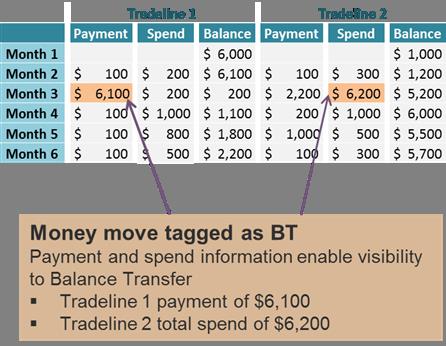"Grandma, it’s me, Mike.”
Imagine hearing the voice
of a loved one (or what sounds like it) informing you they were arrested and in
need of bail money.
Panicked, a desperate
family member may follow instructions to withdraw a large sum of money to
provide to a courier. Suspicious, they even make a video call to which they see
a blurry image on the other end, but the same voice.
When the fight or flight
feeling settles, reality hits.
Sadly, this is not the
scenario of an upcoming Netflix movie. This is fraud – an example of a new grandparent
scam/family emergency scam happening at
scale across the U.S.
While generative AI is
driving efficiencies, personalization and improvements in multiple areas, it’s
also a technology being adopted by fraudsters. Generative AI can be used to
create highly personalized and convincing messages that are tailored to a specific
victim. By analyzing publicly available social media profiles and other
personal information, scammers can use generative AI to create fake accounts,
emails, or phone calls that mimic the voice and mannerisms of a grandchild or
family member in distress. The use of this technology can make it particularly
difficult to distinguish between real and fake communication, leading to
increased vulnerability and susceptibility to fraud.
Furthermore, generative AI
can also be used to create deepfake videos or audio recordings that show the
supposed family member in distress or reinforce the scammer's story. These
deepfakes can be incredibly realistic, making it even harder for victims to
identify fraudulent activity.
What is Generative AI?
Generative artificial
intelligence (GenAI) describes algorithms that can be used to create new
content, including audio, code, images, text, simulations, and videos. Generative
AI has the potential to revolutionize many industries by creating new and
innovative content, but it also presents a significant risk for financial
institutions. Cyber attackers can use generative AI to produce sophisticated
malware, phishing schemes, and other fraudulent activities that can cause data
breaches, financial losses, and reputational damage.
This poses a challenge for financial
organizations, as human error remains one of the weakest links in cybersecurity.
Fraudsters capitalizing on emotions such as fear, stress, desperation, or
inattention can make it difficult to protect against malicious content
generated by generative AI, which could be used as a tactic to defraud
financial institutions.
Four types of Generative AI used for Fraud:
Fraud automation at scale Fraudulent activities often involve multiple steps which can be complex and time-consuming. However, GenAI may enable fraudsters to automate each of these steps, thereby establishing a comprehensive framework for fraudulent attacks. The modus operandi of GenAI involves the generation of scripts or code that facilitates the creation of programs capable of autonomously pilfering personal data and breaching accounts. Previously, the development of such codes and programs necessitated the expertise of seasoned programmers, with each stage of the process requiring separate and fragmented development. Nevertheless, with the advent of GenAI, any fraudster can now access an all-encompassing program without the need for specialized knowledge, amplifying the inherent danger it poses. It can be used to accelerate fraudsters techniques such as credential stuffing, card testing and brute force attacks.
Text content generation In the past, one could often rely on spotting typos or errors as a means of detecting such fraudulent schemes. However, the emergence of GenAI has introduced a new challenge, as it generates impeccably written scripts that possess an uncanny authenticity, rendering the identification of deceit activities considerably more difficult. But now, GenAI can produce realistic text that sounds as if it were from a familiar person, organization, or business by simply feeding GenAI prompts or content to replicate. Furthermore, the utilization of innovative Language Learning Model (LLM) tools enables scammers to engage in text-based conversations with multiple victims, skillfully manipulating them into carrying out actions that ultimately serve the perpetrators' interests.
Image and video manipulation In a matter of seconds, fraudsters, regardless of their level of expertise, are now capable of producing highly authentic videos or images powered by GenAI. This innovative technology leverages deep learning techniques, using vast amounts of collected datasets to train artificial intelligence models. Once these models are trained, they possess the ability to generate visuals that closely resemble the desired target. By seamlessly blending or superimposing these generated images onto specific frames, the original content can be replaced with manipulated visuals. Furthermore, the utilization of AI text-to-image generators, powered by artificial neural networks, allows fraudsters to input prompts in the form of words. These prompts are then processed by the system, resulting in the generation of corresponding images, further enhancing the deceptive capabilities at their disposal.
Human voice generation The emergence of AI-generated voices that mimic real people has created new vulnerabilities in voice verification systems. Firms that rely heavily on these systems, such as investment firms, must take extra precautions to ensure the security of their clients' assets.
Criminals
can also use AI chatbots to build relationships with victims and exploit their
emotions to convince them to invest money or share personal information. Pig
butchering scams and romance scams are examples of these types of frauds where
AI chatbots can be highly effective, as they are friendly, convincing, and can
easily follow a script.
In particular, synthetic identity
fraud has become an increasingly common tactic among cybercriminals. By
creating fake personas with plausible social profiles, hackers can avoid detection
while conducting financial crimes.
It is essential for
organizations to remain vigilant and verify the identities of any new contacts
or suppliers before engaging with them. Failure to do so could result in
significant monetary loss and reputational damage.
Leverage AI to fight bad actors
In today's digital landscape, businesses face increased
fraud risks from advanced chatbots and generative technology. To combat this, businesses
must use the same weapons than criminals, and train AI-based tools to detect
and prevent fraudulent activities.
Fraud prediction: Generative AI can analyze historical data to predict future fraudulent activities. By analyzing patterns in data and identifying potential risk factors, generative AI can help fraud examiners anticipate and prevent fraudulent behavior. Machine learning algorithms can analyze patterns in data to identify suspicious behavior and flag it for further investigation.
Fraud Investigation: In addition to preventing fraud, generative
AI can assist fraud examiners in investigating suspicious activities by
generating scenarios and identifying potential suspects. By analyzing email
communications and social media activity, generative AI can uncover hidden
connections between suspects and identify potential fraudsters.
To confirm the authenticity of users, financial institutions should adopt sophisticated identity verification methods that include liveness detection algorithms and document-centric identity proofing, and predictive analytics models.
These measures can help prevent bots from
infiltrating their systems and spreading disinformation, while also protecting
against scams and cyberattacks.
In conclusion, financial institutions must stay
vigilant and deploy new tools and technologies to protect against the evolving
threat landscape. By adopting advanced identity verification solutions,
organizations can safeguard themselves and their customers from potential
risks.
To learn more about how Experian can help you leverage fraud prevention solutions, visit us online or request a call




